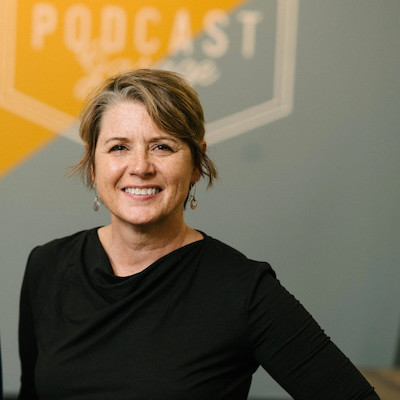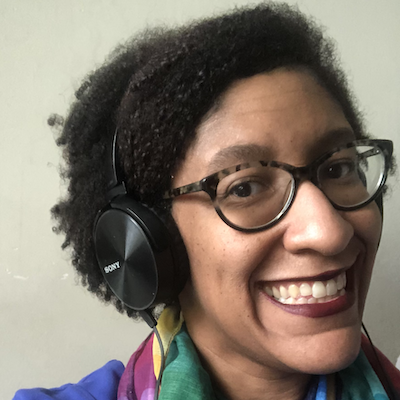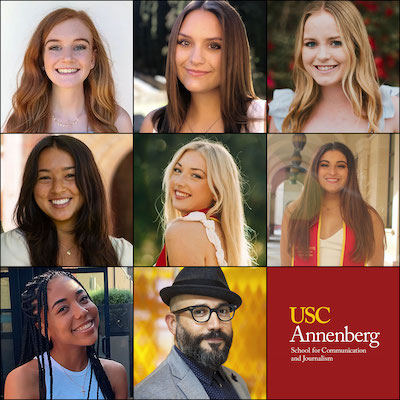Print makes a comeback, but not in the way you think
A couple months ago, I received the first box of the community zines that journalism students at the University of Southern California created in collaboration with hyperlocal news outlet L.A. Taco. It had been so long since I had smelled the scent of fresh paper from a printer. The excitement spread beyond that moment to the surrounding community in Los Angeles, when L.A. Taco members started to receive their copies in the mail.
I finally got my @LATACO zines delivered over the weekend. I was getting a little jealous after seeing everyone post about getting them. I finally checked my mail from the weekend and there they were. pic.twitter.com/hQkDlMdpOX
—
Old Man Ruben
(@Old_Man_Ruben) November 1, 2021
For me, print was back. And I loved every moment. I started my career in journalism as a print reporter and designer, and remember physically sending the newspaper to the printer as a student and the fresh smell of newsprint when our publications were delivered. So much of what we do has gone digital — websites, social media, apps. When I proposed a new magazine production class at USC Annenberg, I wasn’t sure what the enrollment would be like. The class filled quickly and student after student contacted me wanting to enroll. Print was back, but not in the way you think.
We wouldn’t be creating an expensive glossy, four-color magazine. We were going to create more gritty community zines. Inspired by a series of zines produced by the Los Angeles Times, my magazine production students worked with stories produced in classes taught by USC professors Laura Castaneda (magazine writing) and Heather John Fogarty (food journalism) to design two zines. Stories featured street vendors, local markets, the best chilaquiles in Los Angeles, dipping ramen, local food banks, the San Pedro Fish Market and so much more. Students also created interactive designs featuring crossword puzzles, cutout stickers, and mazes.
Happy Garifuna Settlement Day, iduheñu!! I’m elated that I got to share the story of L.A’s only Garifuna food truck and our small but strong Afro-indigenous/Latinx community in South Central for the @LATACO zine.
Grab a big bowl of hudut and read uppic.twitter.com/W7eJfxkkhS
— astrid kayembe (@astridkayembe_) November 19, 2021
Our project wasn’t just about print. It was about making something together. As part of the collaborative community zine project funded by the Online News Association and with the support of L.A. Taco and editor Javier Cabral, we had community engagement events on L.A. Taco’s Facebook Live page. We asked the community to participate and send in content. We streamed live events on Facebook that featured interviews with street vendors, cooking demonstrations, and community-submitted content. The digital content was integrated into our print zines with QR codes.
Chef Jaime & Chef Ramiro of @CasitaMex lit up the screen w/ their smiles & delicious chilaquiles recipe!
The red sauce was steaming hot w/ cojita cheese & onions on top. Don’t forget the egg
. Watch!
Thx @USCAnnenberg @LATACO @ONA for supporting this project.
#ascj https://t.co/WaTZEaoBJE
— Amara Aguilar (@amara_media) April 26, 2021
Print and digital worlds collided in the most beautiful way. Students learned how to create a magazine, work in community engagement, produce social media content, run a live show, plan community events, create callouts for content, empower diverse communities, and so much more. This is what modern journalism is all about.
The result was two community zines, called Taco Life Volume 1 and Taco Life Volume 2. In Los Angeles, I saw other community zine projects being created this fall by journalists as ours were being distributed. Samanta Helou-Hernandez collaborated with a team to produce a community zine honoring people in Virgil Village who’ve died of Covid-19. Lexis Olivier-Ray produced a community zine featuring photographs documenting MacArthur Park.
For decades, zines have been an important part of communities. From exploring science fiction and other niche genres, to expression in the areas of arts, culture, politics, activism and more, zines have been a way that communities take ownership of their own stories in both how they are told and how they are visually presented and distributed. Zines have created journalism that is accessible, serves diverse communities, creative, collaborative and experimental. They can also drive membership and contribute to sustainability in newsrooms. (Hint: Buy the L.A. Taco zines here.)
In 2022, print is back and we’ll see more community zines being produced as an effective way to make news more accessible, amplify diverse voices, and help us collaborate with communities to make news — together.
Amara Aguilar is an associate professor of professional practice at USC’s Annenberg School of Communication and Journalism.

A couple months ago, I received the first box of the community zines that journalism students at the University of Southern California created in collaboration with hyperlocal news outlet L.A. Taco. It had been so long since I had smelled the scent of fresh paper from a printer. The excitement spread beyond that moment to the surrounding community in Los Angeles, when L.A. Taco members started to receive their copies in the mail.
I finally got my @LATACO zines delivered over the weekend. I was getting a little jealous after seeing everyone post about getting them. I finally checked my mail from the weekend and there they were. pic.twitter.com/hQkDlMdpOX
—
Old Man Ruben
(@Old_Man_Ruben) November 1, 2021
For me, print was back. And I loved every moment. I started my career in journalism as a print reporter and designer, and remember physically sending the newspaper to the printer as a student and the fresh smell of newsprint when our publications were delivered. So much of what we do has gone digital — websites, social media, apps. When I proposed a new magazine production class at USC Annenberg, I wasn’t sure what the enrollment would be like. The class filled quickly and student after student contacted me wanting to enroll. Print was back, but not in the way you think.
We wouldn’t be creating an expensive glossy, four-color magazine. We were going to create more gritty community zines. Inspired by a series of zines produced by the Los Angeles Times, my magazine production students worked with stories produced in classes taught by USC professors Laura Castaneda (magazine writing) and Heather John Fogarty (food journalism) to design two zines. Stories featured street vendors, local markets, the best chilaquiles in Los Angeles, dipping ramen, local food banks, the San Pedro Fish Market and so much more. Students also created interactive designs featuring crossword puzzles, cutout stickers, and mazes.
Happy Garifuna Settlement Day, iduheñu!! I’m elated that I got to share the story of L.A’s only Garifuna food truck and our small but strong Afro-indigenous/Latinx community in South Central for the @LATACO zine.
Grab a big bowl of hudut and read uppic.twitter.com/W7eJfxkkhS
— astrid kayembe (@astridkayembe_) November 19, 2021
Our project wasn’t just about print. It was about making something together. As part of the collaborative community zine project funded by the Online News Association and with the support of L.A. Taco and editor Javier Cabral, we had community engagement events on L.A. Taco’s Facebook Live page. We asked the community to participate and send in content. We streamed live events on Facebook that featured interviews with street vendors, cooking demonstrations, and community-submitted content. The digital content was integrated into our print zines with QR codes.
Chef Jaime & Chef Ramiro of @CasitaMex lit up the screen w/ their smiles & delicious chilaquiles recipe!
The red sauce was steaming hot w/ cojita cheese & onions on top. Don’t forget the egg
. Watch!
Thx @USCAnnenberg @LATACO @ONA for supporting this project.
#ascj https://t.co/WaTZEaoBJE
— Amara Aguilar (@amara_media) April 26, 2021
Print and digital worlds collided in the most beautiful way. Students learned how to create a magazine, work in community engagement, produce social media content, run a live show, plan community events, create callouts for content, empower diverse communities, and so much more. This is what modern journalism is all about.
The result was two community zines, called Taco Life Volume 1 and Taco Life Volume 2. In Los Angeles, I saw other community zine projects being created this fall by journalists as ours were being distributed. Samanta Helou-Hernandez collaborated with a team to produce a community zine honoring people in Virgil Village who’ve died of Covid-19. Lexis Olivier-Ray produced a community zine featuring photographs documenting MacArthur Park.
For decades, zines have been an important part of communities. From exploring science fiction and other niche genres, to expression in the areas of arts, culture, politics, activism and more, zines have been a way that communities take ownership of their own stories in both how they are told and how they are visually presented and distributed. Zines have created journalism that is accessible, serves diverse communities, creative, collaborative and experimental. They can also drive membership and contribute to sustainability in newsrooms. (Hint: Buy the L.A. Taco zines here.)
In 2022, print is back and we’ll see more community zines being produced as an effective way to make news more accessible, amplify diverse voices, and help us collaborate with communities to make news — together.
Amara Aguilar is an associate professor of professional practice at USC’s Annenberg School of Communication and Journalism.
Victor Pickard

Jessica Clark

James Salanga

Matt DeRienzo

Ariel Zirulnick

Sarah Stonbely

Kerri Hoffman

Don Day

Matthew Pressman

David Cohn

Chicas Poderosas

Joy Mayer

Larry Ryckman

Jesse Holcomb

Joe Amditis

Mandy Jenkins

Joshua P. Darr

Rachel Glickhouse

Cherian George

Jennifer Brandel

Mario García

Mary Walter-Brown

Megan McCarthy

Cindy Royal

Christina Shih

Tom Trewinnard

Catalina Albeanu

Richard Tofel

Sarah Marshall

Mike Rispoli

A.J. Bauer

Jonas Kaiser

Jim Friedlich

Errin Haines

Moreno Cruz Osório

Julia Angwin

Melody Kramer

Ståle Grut

Tamar Charney

Chase Davis

Daniel Eilemberg

Millie Tran

Meena Thiruvengadam

Stefanie Murray

Simon Allison

Joni Deutsch

Anita Varma

Alice Antheaume

Shannon McGregor Carolyn Schmitt

Juleyka Lantigua

Jesenia De Moya Correa

Jody Brannon

Gordon Crovitz

James Green

Tony Baranowski

Joanne McNeil

Kristen Jeffers

Stephen Fowler

Anika Anand

Matt Karolian

Brian Moritz

S. Mitra Kalita

Michael W. Wagner

Sam Guzik

Gabe Schneider

Gonzalo del Peon

Anthony Nadler

Eric Nuzum

David Skok

Izabella Kaminska

Laxmi Parthasarathy

Shalabh Upadhyay

Julia Munslow

Robert Hernandez

John Davidow

Rasmus Kleis Nielsen

Simon Galperin

Amy Schmitz Weiss

Wilson Liévano

Doris Truong

Jennifer Coogan

Andrew Freedman

Burt Herman

Whitney Phillips

Amara Aguilar

Nik Usher

Candace Amos

j. Siguru Wahutu

Natalia Viana

AX Mina

Cristina Tardáguila

Paul Cheung

Kathleen Searles Rebekah Trumble

Raney Aronson-Rath

Francesco Zaffarano

Christoph Mergerson

Kristen Muller

Kendra Pierre-Louis

Parker Molloy

Zizi Papacharissi




